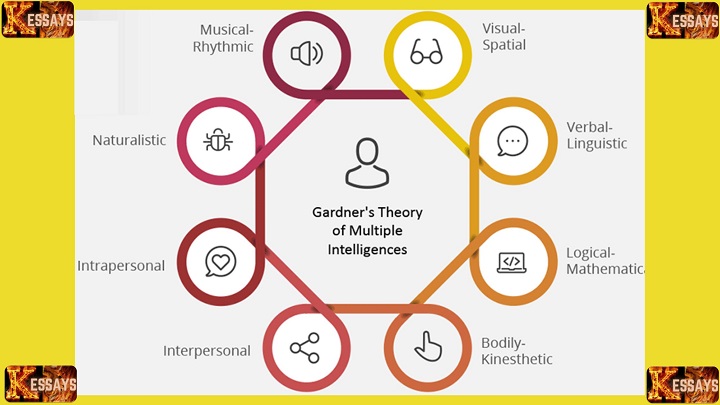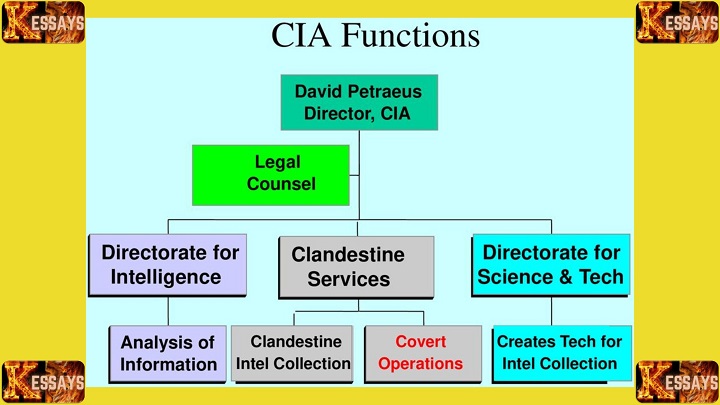I. Introduction
Intelligence Collection Plan: Defining the Concept and Purpose
An intelligence collection plan is a structured framework used by intelligence professionals to gather information and data from various sources to produce actionable intelligence. It outlines the specific objectives, methodologies, and timelines for collecting information relevant to the intelligence requirements of an organization or agency. The primary purpose of an intelligence collection plan is to support decision-making processes by providing accurate and timely insights into potential threats, risks, or opportunities.
II. Understanding the Intelligence Collection Process
A. Definition and Components of an Intelligence Collection Plan
An intelligence collection plan consists of several key components. These include:
- Intelligence Requirements: Clearly defined objectives and information needs that drive the collection efforts.
- Sources of Information: Identification of the potential sources that can provide relevant information, such as human sources, open sources, technical systems, or specialized intelligence collection platforms.
- Source Evaluation: Assessment of source credibility and reliability to ensure the accuracy and quality of the collected information.
- Collection Methods and Techniques: Selection of appropriate methods and techniques for gathering information, such as interviews, surveillance, analysis of publicly available data, or technical monitoring.
- Timelines and Priorities: Establishment of timelines and priorities based on the urgency and importance of the intelligence requirements.
B. Importance of Intelligence Collection for Decision-Making
Intelligence collection is vital for effective decision-making at various levels, whether it's within government agencies, military operations, or private organizations. It provides decision-makers with a comprehensive understanding of the operating environment, potential risks, and opportunities. By collecting and analyzing relevant information, decision-makers can make informed choices, develop effective strategies, and mitigate potential threats.
C. Key Principles and Ethical Considerations
Intelligence collection must adhere to key principles and ethical considerations. These include:
- Legality: Intelligence collection activities should comply with applicable laws, regulations, and international conventions.
- Privacy and Civil Liberties: Respecting the privacy and civil liberties of individuals and avoiding unnecessary intrusion while collecting information.
- Proportionality: Collecting information that is relevant and necessary to fulfill the intelligence requirements without excessive intrusion or collateral impact on innocent individuals.
- Human Rights: Ensuring that intelligence collection activities do not violate fundamental human rights, including freedom of speech, expression, and association.

III. Steps in Developing an Intelligence Collection Plan
A. Assessing Intelligence Requirements
The first step in developing an intelligence collection plan is to assess intelligence requirements. This involves clearly defining the objectives and specific information needs that support the decision-making process. These requirements should be based on the organization's priorities, operational context, and the potential threats or challenges it faces.
B. Identifying Sources of Information
Once intelligence requirements are established, the next step is to identify the sources of information that can provide the necessary data. These sources can include human sources, such as informants or experts, open sources like newspapers or public databases, technical systems like sensors or surveillance equipment, or specialized intelligence collection platforms.
C. Evaluating Source Credibility and Reliability
Evaluating the credibility and reliability of sources is crucial to ensure the accuracy and quality of the collected information. This evaluation involves assessing factors such as the source's track record, access to relevant information, motivations, and potential biases. Reliable and trustworthy sources are prioritized in the collection plan to ensure the integrity of the intelligence.
D. Determining Collection Methods and Techniques
Based on the intelligence requirements and available sources, the next step is to determine the most appropriate collection methods and techniques. These can include direct interviews, data mining from online platforms, technical surveillance, or satellite imagery analysis, among others. The selection of methods should consider factors such as the desired level of detail, the sensitivity of the information, and the feasibility of implementation.
E. Establishing Timelines and Priorities
Establishing timelines and priorities is essential to ensure efficient and effective intelligence collection. The collection plan should include specific timelines for gathering information, processing and analyzing the data, and delivering the final intelligence products. Prioritization should be based on the urgency and importance of the intelligence requirements, allocating resources accordingly.
IV. Types of Intelligence Collection Methods
A. Open Source Intelligence (OSINT)
Open Source Intelligence involves collecting information from publicly available sources such as news articles, social media, academic publications, or official reports. OSINT provides a broad range of information and is often used to gain insights into public sentiment, current events, or general background knowledge.
B. Human Intelligence (HUMINT)
Human Intelligence involves gathering information from human sources, such as informants, agents, or experts. HUMINT relies on interpersonal interactions, interviews, and debriefings to gather valuable insights that may not be accessible through other collection methods. It can provide unique and firsthand information about individuals, organizations, or events.
C. Signals Intelligence (SIGINT)
Signals Intelligence involves collecting and analyzing electronic signals, such as radio transmissions, emails, or phone conversations. SIGINT provides valuable information on the communications and activities of individuals or groups of interest. It often requires specialized equipment and expertise to intercept, decrypt, and analyze signals.
D. Imagery Intelligence (IMINT)
Imagery Intelligence involves the collection and analysis of visual information, such as aerial or satellite imagery. IMINT provides valuable insights into the physical characteristics of an area, including infrastructure, facilities, or potential threats. Advanced image analysis techniques help extract meaningful information from images.
E. Measurement and Signature Intelligence (MASINT)
Measurement and Signature Intelligence involves collecting and analyzing data derived from various physical phenomena, such as radar emissions, thermal signatures, or seismic activity. MASINT provides unique intelligence by focusing on the measurement and analysis of distinctive signatures associated with specific targets or activities.
F. Cyber Intelligence
Cyber Intelligence involves the collection and analysis of information related to computer networks, systems, and digital activities. It includes monitoring cyber threats, analyzing malware, tracking hacker activities, and assessing vulnerabilities. Cyber Intelligence is critical in detecting and mitigating cyber threats and protecting information systems.
V. Considerations for Targeting and Prioritizing Collection Efforts
A. Importance of Targeting Specific Information Needs
Efficient intelligence collection requires targeting specific information needs. By clearly defining the intelligence requirements, organizations can focus their collection efforts on gathering relevant and actionable data. Targeting specific needs enhances the quality and efficiency of the collection process, ensuring that resources are utilized effectively.
B. Risk Assessment and Mitigation Strategies
Risk assessment is a critical consideration in intelligence collection. It involves evaluating the potential risks associated with collecting certain types of information or engaging specific sources. Mitigation strategies should be developed to minimize risks to sources, collectors, and the organization itself. This may involve protective measures, secure communication channels, or anonymity preservation techniques.
C. Balancing Proactive and Reactive Collection Efforts
Intelligence collection should strike a balance between proactive and reactive approaches. Proactive collection efforts involve actively seeking out information based on intelligence requirements, while reactive collection responds to specific events or emerging intelligence needs. Finding the right balance ensures comprehensive coverage of intelligence requirements while allowing flexibility to adapt to changing circumstances.

VI. Coordination and Collaboration in Intelligence Collection
A. Interagency Cooperation and Information Sharing
Coordination and collaboration among different agencies and organizations are vital for effective intelligence collection. Sharing information, expertise, and resources among agencies enhances the overall intelligence-gathering capabilities and avoids duplication of efforts. Interagency cooperation facilitates a comprehensive understanding of complex issues and enables a more holistic approach to intelligence collection.
B. Liaison with External Stakeholders and Partners
Intelligence collection often involves engaging with external stakeholders and partners. These may include foreign intelligence services, law enforcement agencies, academic institutions, or private sector organizations. Establishing liaison relationships enables the exchange of information, collaborative operations, and leveraging specialized capabilities, ultimately enhancing the quality and depth of intelligence collection.
C. Role of Intelligence Fusion Centers
Intelligence fusion centers play a crucial role in coordinating and integrating intelligence collection efforts. These centers serve as central hubs where information from multiple sources is collected, analyzed, and disseminated to relevant stakeholders. They facilitate collaboration, information sharing, and the fusion of intelligence products from various sources, maximizing the effectiveness of intelligence collection.
VII. Analysis and Evaluation of Collected Intelligence
A. Quality Control and Validation of Information
The analysis and evaluation of collected intelligence are essential for ensuring its quality and reliability. Rigorous quality control processes should be in place to verify the accuracy, completeness, and relevance of the collected information. Validation techniques, such as cross-referencing with multiple sources or conducting independent verification, help reduce errors and enhance the credibility of the intelligence.
B. Data Processing and Exploitation
Data processing and exploitation involve organizing, categorizing, and extracting meaningful insights from collected information.
Advanced data analytics and visualization techniques can help identify patterns, trends, or anomalies that contribute to a better understanding of the intelligence picture. Data fusion, integration, and synthesis enable the creation of comprehensive intelligence products.
C. Analytical Techniques and Tools
Various analytical techniques and tools are employed to interpret and analyze collected intelligence. These include data mining, link analysis, pattern recognition, geospatial analysis, and statistical modeling, among others. Analysts use these techniques to uncover hidden relationships, identify emerging threats, or develop predictive models, supporting decision-making processes.
D. Producing Actionable Intelligence Products
The ultimate goal of intelligence collection is to produce actionable intelligence products that support decision-making. These products should present the analyzed information in a clear, concise, and timely manner. They should address the intelligence requirements, provide insights, and offer recommendations or courses of action that help decision-makers respond effectively to identified threats or opportunities.
VIII. Challenges and Ethical Considerations in Intelligence Collection
A. Legal and Privacy Implications
Intelligence collection activities must adhere to applicable laws and regulations. Depending on the jurisdiction, there may be legal restrictions on the collection of certain types of information, privacy protections, or oversight mechanisms. Organizations engaged in intelligence collection must ensure compliance with these legal frameworks to avoid potential legal repercussions or violations of individuals' rights.
B. Protecting Sources and Methods
Protecting the confidentiality and anonymity of sources is paramount in intelligence collection. Organizations must implement robust security measures to safeguard the identity and information provided by human sources, ensuring their safety and the integrity of the intelligence. Similarly, protecting sensitive methods, techniques, or technical capabilities is essential to maintain operational security and prevent adversaries from compromising the collection process.
C. Maintaining Objectivity and Avoiding Bias
Intelligence collection should be conducted with objectivity and impartiality. Collectors and analysts must strive to avoid personal biases or preconceived notions that may influence the collection and analysis process. Adherence to professional standards and methodologies, critical thinking, and peer review processes help ensure that intelligence products are objective, unbiased, and based on evidence.
IX. Adjusting and Adapting the Intelligence Collection Plan
A. Continuous Evaluation and Feedback
An effective intelligence collection plan requires continuous evaluation and feedback. Regular assessments of the plan's effectiveness, responsiveness to intelligence requirements, and overall performance are essential. Feedback from collectors, analysts, and decision-makers helps identify areas for improvement, refine collection methodologies, and adapt to emerging challenges.
B. Incorporating Lessons Learned and Best Practices
Lessons learned and best practices from past intelligence collection efforts should be integrated into the planning process. This includes leveraging feedback, analyzing successes and failures, and disseminating knowledge throughout the organization. Incorporating lessons learned enhances the efficiency and effectiveness of future intelligence collection endeavors.
C. Flexibility in Response to Changing Threats and Priorities
Intelligence collection plans should be flexible and responsive to changing threats, priorities, and operational contexts. The dynamic nature of threats requires continuous monitoring, reassessment, and adaptation of collection strategies. The ability to quickly adjust priorities, allocate resources, and adopt new collection methods is crucial to maintaining the relevance and effectiveness of the intelligence collection plan.

X. Conclusion
The effective development and implementation of an intelligence collection plan are vital for gathering actionable insights to support decision-making. By systematically assessing intelligence requirements, identifying appropriate sources, employing diverse collection methods, and adhering to ethical considerations, organizations can acquire the necessary information to address risks, seize opportunities, and protect national security or organizational interests. The intelligence collection process should be continuously evaluated, adjusted, and informed by collaboration and coordination with stakeholders. A well-executed intelligence collection plan contributes to informed decision-making, enhances situational awareness, and empowers organizations to respond effectively in an ever-evolving landscape.



Comments are closed!